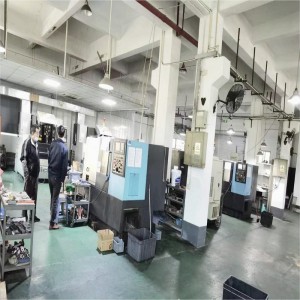One of the key technologies contributing to the impressive growth of this industry in recent years is CNC machining.
Computer numerical control (CNC) machining relies on computer code to convert 3D CAD models into machined parts, making them highly accurate in fabricating optical communication parts.
CNC Machining Precision Optical Components: The Process
The CNC machining process starts with the product designer creating a 3D CAD model of the desired optical component using computer-aided design (CAD) software. Then, using computer-aided manufacturing (CAM) software, this 3D CAD model is converted into a computer program (g-code).
The g-code controls the sequence of movement of the CNC cutting tools and workpiece to create the desired optical assemblies.
Precision Optical Component Parts Manufactured Using CNC Machines
1.Microscope and microscope components
An electron microscope typically features a lens holder, which helps to handle and protect the delicate lens. As you may have guessed, the optical performance of electron microscopes depends on the dimensional accuracy of the lens and lens holder.
CNC machines can produce lens holders to high accuracy, allowing product designers to meet stringent tolerance requirements, common in the optical communication industry.
2.Laser components
Lasers are essential devices in a wide range of industries, especially the medical sector, where they are used for surgical procedures. A laser is made of several components, all of which must be fabricated to high accuracy and tight tolerances to achieve desirable performance.
CNC machines are used to manufacture the casings, start rings, and mirrors commonly found in lasers. Because CNC machines can fabricate parts to meet a tolerance requirement of 4 μm and surface roughness of Ra 0.9 μm, they are the preferred machining technology for laser components demanding high dimensional accuracy and excellent surface finish.
3.Custom Optical Parts
Lasers, microscopes, and other optical communication devices are typically manufactured in small volumes. As a result, you might experience challenges when replacing optical components or obsolete parts.
One way by which optical communication companies are mitigating this challenge is by CNC manufacturing customer-specific optical parts using third-party CNC machining service providers.
Through reverse engineering, these machine shops convert physical samples of the obsolete part into a 3D CAD model. An experienced machinist will then program a CNC machine to recreate these samples accurately and precisely.
Learn more about custom machining.
Without a doubt, CNC machines are ideal for manufacturing a wide variety of precision optical components. However, the success of your optical component manufacturing project primarily depends on the machine shop you work with.
You want to work with a machine shop that has state-of-the-art CNC machining equipment as well as highly qualified engineers capable of creating parts accurately and precisely. Also, you should look for manufacturers that comply with the regulatory standards in the industry you intend to serve.
Shenzhen Xinsheng Precision Hardware Machinery Co., Ltd. is a trusted name in the optical communication industry. Using top-of-the-line CNC machining technologies, our highly qualified CNC machinists and engineers help optical communication companies to create a broad range of products accurately and precisely. Besides, our facility is IOS9001 and SGS certified.
Post time: Feb-13-2023







